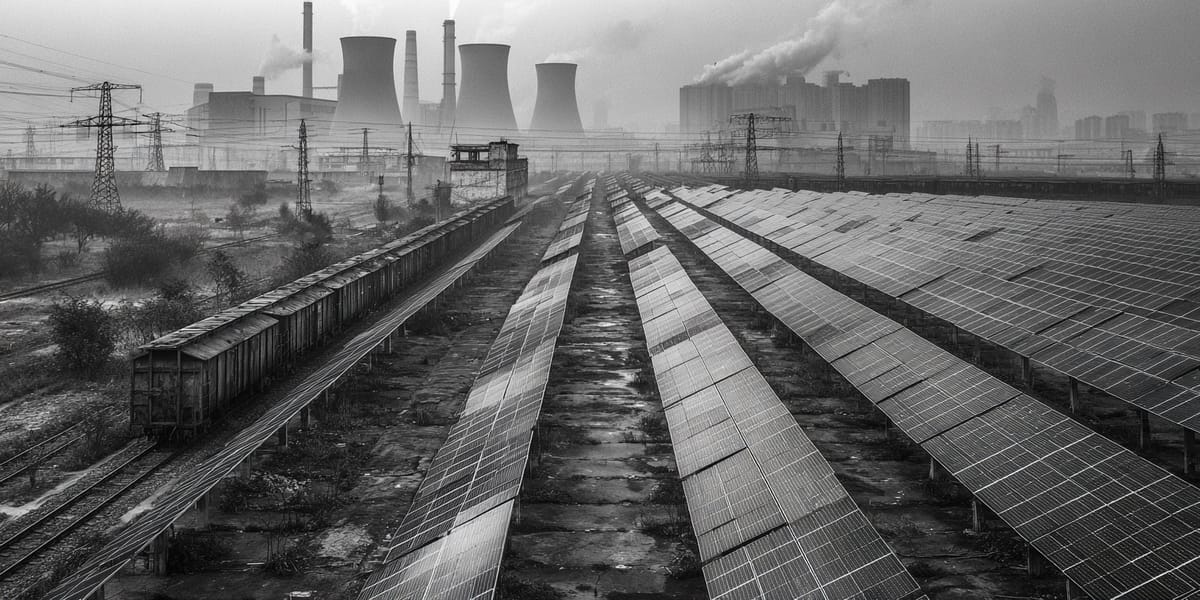China's Energy Contradiction: Record Solar Growth Alongside Coal Investment

China added 210 gigawatts of solar capacity and 50 gigawatts of wind in the first half of 2025. The figures represent a near doubling of renewable installations compared to the same period in 2024. According to Yahoo News, the country installed more renewables last year than the entire existing capacity of the United States.
However, coal power capacity also grew during the same period. China accounted for 93 percent of new global coal construction in 2024, according to the Centre for Research on Energy and Clear Air. The country approved over 200 gigawatts of coal capacity in 2022 and 2023. This amount exceeds the size of the entire U.S. coal fleet.
President Xi Jinping made the country's first emissions reduction pledges. Yet new or revived coal proposals hit a decade high in the first half of this year. China now consumes nearly 40 percent more coal than the rest of the world combined.
Why China Maintains Both Systems
Officials remain concerned about power supply security following shortages in 2021 and 2022. These outages resulted from pricing issues, demand surges, and extreme weather. Muyi Yang, senior energy analyst at Ember, said China follows a "build before breaking" approach. The government hesitates to abandon coal before renewables are fully operational.
Energy demand also plays a role. Ember reports that electricity consumption grew faster than renewable installations until 2025. In the first half of 2025, renewables finally met demand growth. But slower economic growth contributed to this shift.
Grid limitations create another challenge. Large renewable installations sit in sparsely populated western regions. Transmitting power over long distances increases costs. China invested 608 billion yuan in grid construction in 2024, a 15.3 percent increase. Coal plants currently run at only 50 percent capacity. This provides backup power when renewable output drops.
Global Energy Market Impacts
The rest of the world moved away from coal in 2024. Global Energy Monitor found that global coal additions reached the lowest level in 20 years at 44 gigawatts. Outside China, coal capacity decreased by 9.2 gigawatts as retirements exceeded additions.
Europe retired 11 gigawatts of coal capacity in 2024, four times more than in 2023. Germany decommissioned 6.7 gigawatts. The United Kingdom shut down its last coal plant in September 2024. Between 2015 and 2024, coal capacity under development outside China and India dropped over 80 percent.
China's actions have broader economic effects. The country accounts for 31 percent of global clean energy investment. Chinese companies file around 75 percent of global clean energy patent applications. In 2000, this figure stood at just 5 percent. Clean energy contributed 10 percent to China's gross domestic product in 2024 and drove a quarter of economic growth.
Cheap Chinese technology enabled 25 percent of emerging markets to surpass U.S. levels in solar generation share. Projected Chinese solar manufacturing capacity in 2030 exceeds global solar deployment targets in the International Energy Agency's Net Zero Roadmap by 65 percent.
Further Reading
For deeper insights into global adoption trends and regulatory frameworks, our Alternative Financial Systems Index tracks energy transition metrics and policy developments across 50 countries. The resource provides data on how nations balance traditional infrastructure with renewable capacity.




